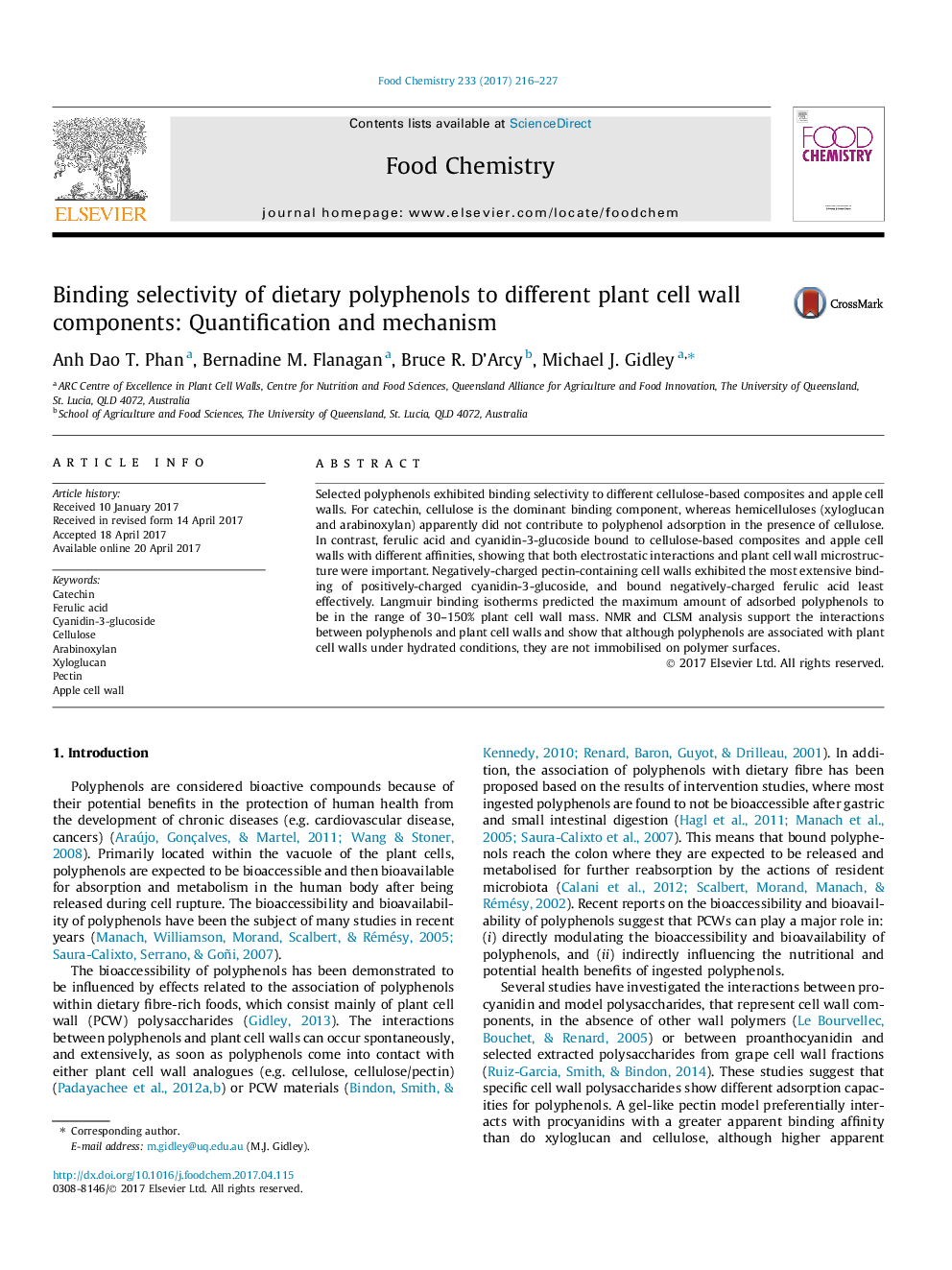| کد مقاله | کد نشریه | سال انتشار | مقاله انگلیسی | نسخه تمام متن |
|---|---|---|---|---|
| 5132819 | 1492059 | 2017 | 12 صفحه PDF | دانلود رایگان |

- Different polyphenols selectively bind to different plant cell wall components.
- Cellulose is the dominant binding component particularly for neutral catechin.
- Electrostatic interactions influence binding of ferulic acid and cyanidin-3-glucoside.
- Cell wall associated (bound) polyphenols are not immobilised.
Selected polyphenols exhibited binding selectivity to different cellulose-based composites and apple cell walls. For catechin, cellulose is the dominant binding component, whereas hemicelluloses (xyloglucan and arabinoxylan) apparently did not contribute to polyphenol adsorption in the presence of cellulose. In contrast, ferulic acid and cyanidin-3-glucoside bound to cellulose-based composites and apple cell walls with different affinities, showing that both electrostatic interactions and plant cell wall microstructure were important. Negatively-charged pectin-containing cell walls exhibited the most extensive binding of positively-charged cyanidin-3-glucoside, and bound negatively-charged ferulic acid least effectively. Langmuir binding isotherms predicted the maximum amount of adsorbed polyphenols to be in the range of 30-150% plant cell wall mass. NMR and CLSM analysis support the interactions between polyphenols and plant cell walls and show that although polyphenols are associated with plant cell walls under hydrated conditions, they are not immobilised on polymer surfaces.
Journal: Food Chemistry - Volume 233, 15 October 2017, Pages 216-227